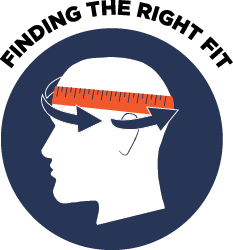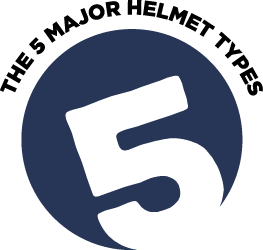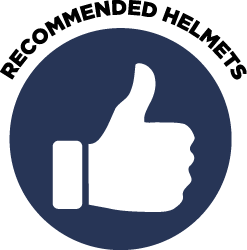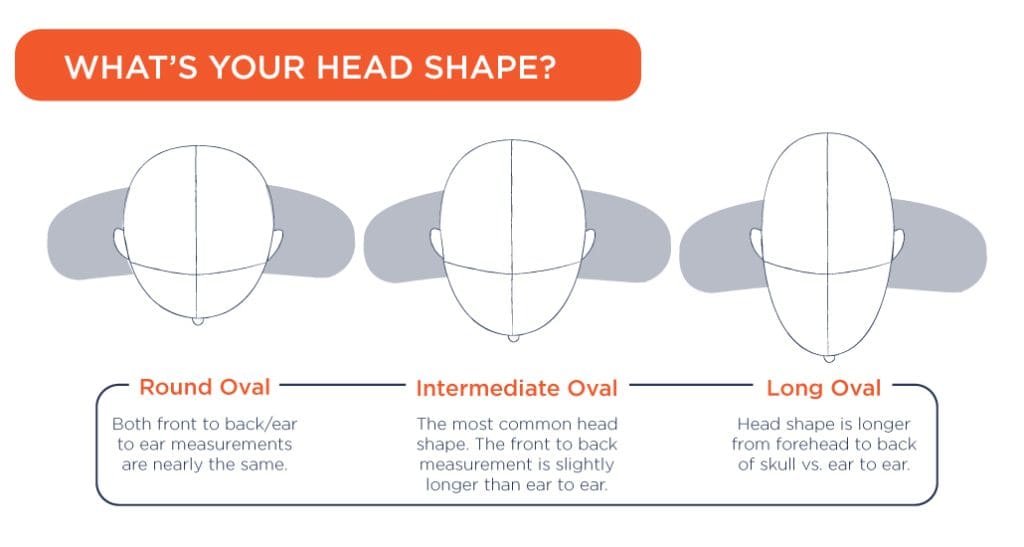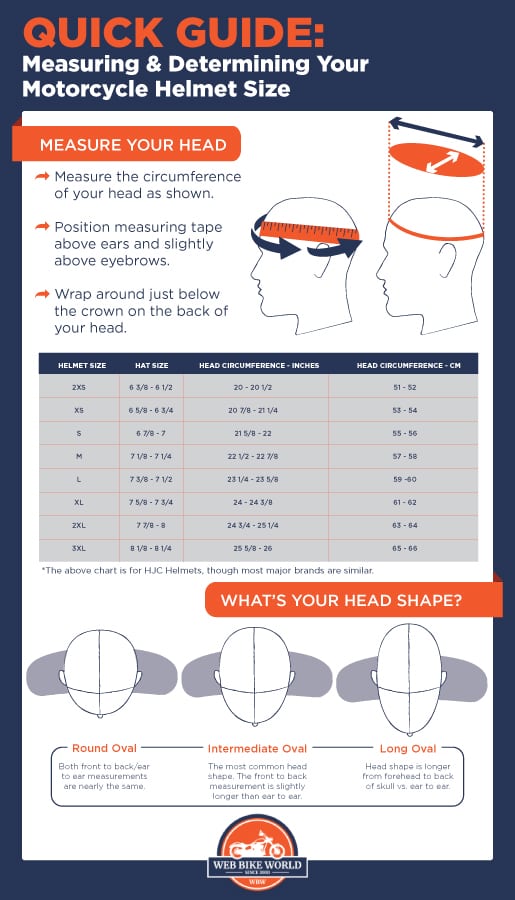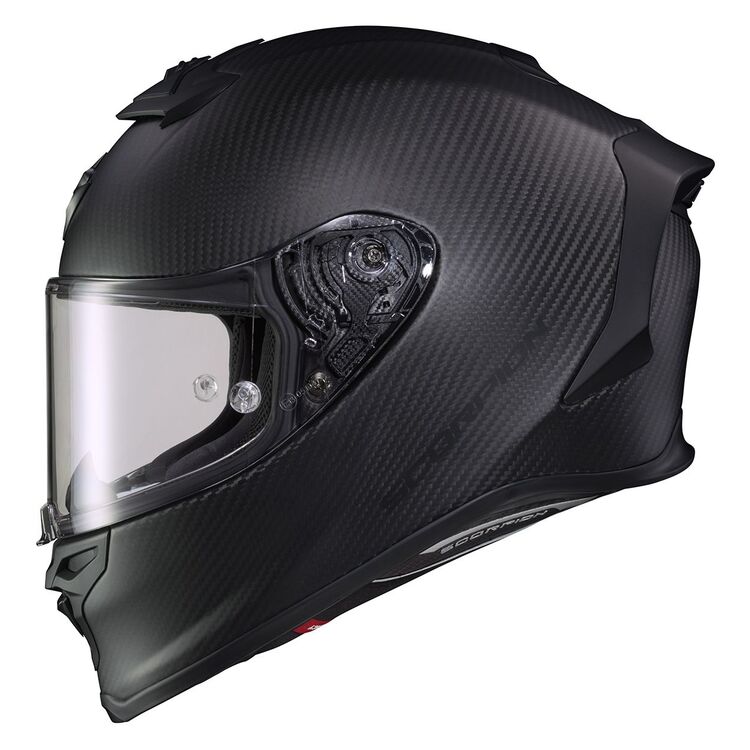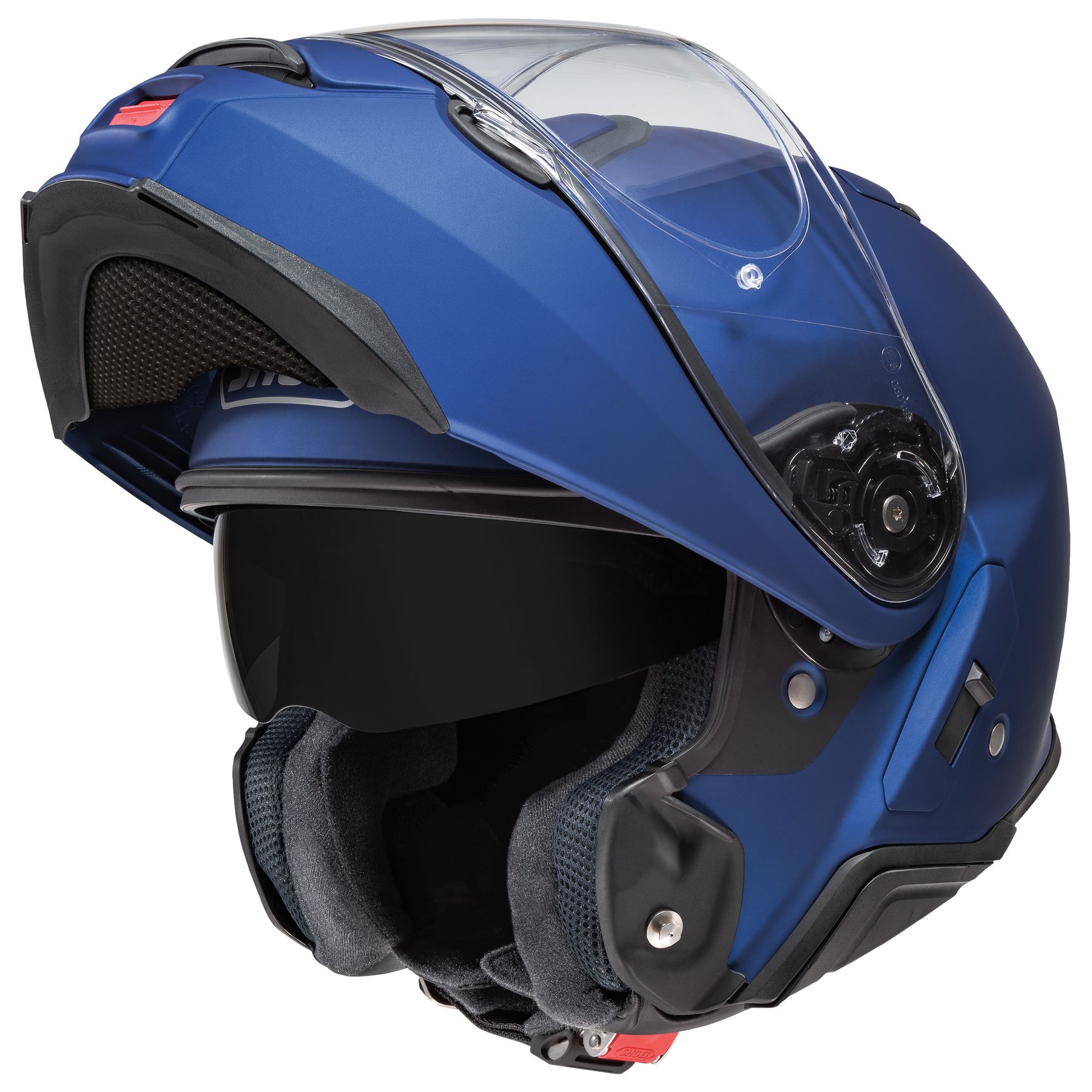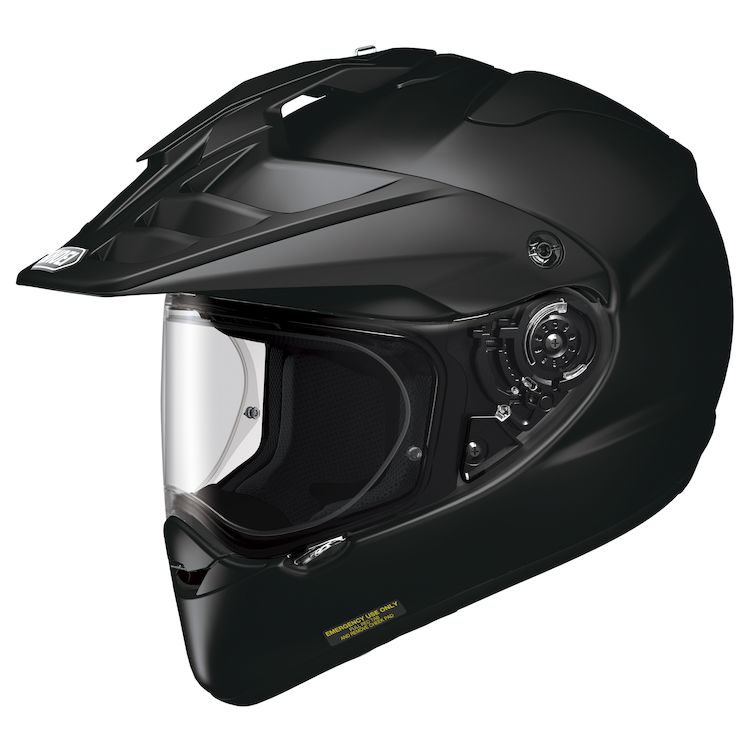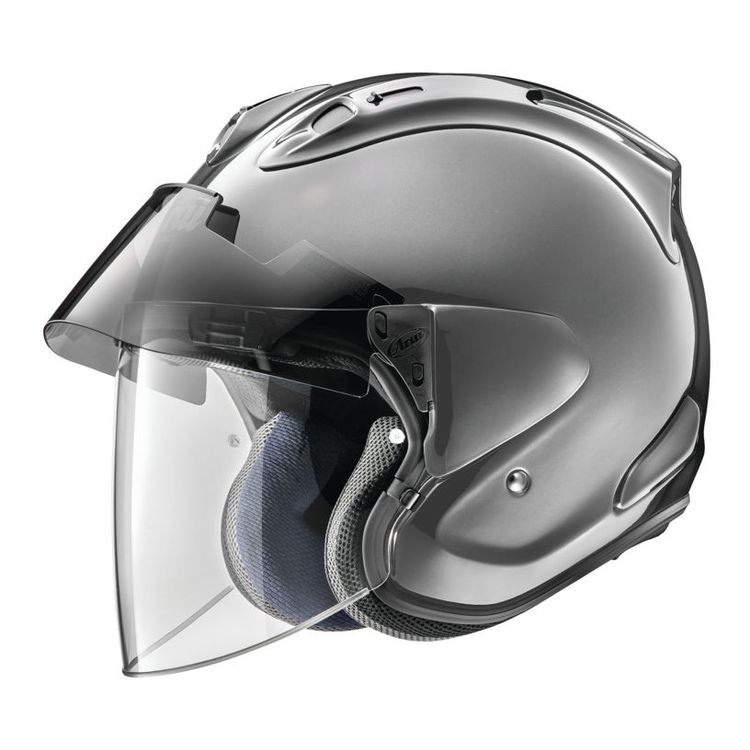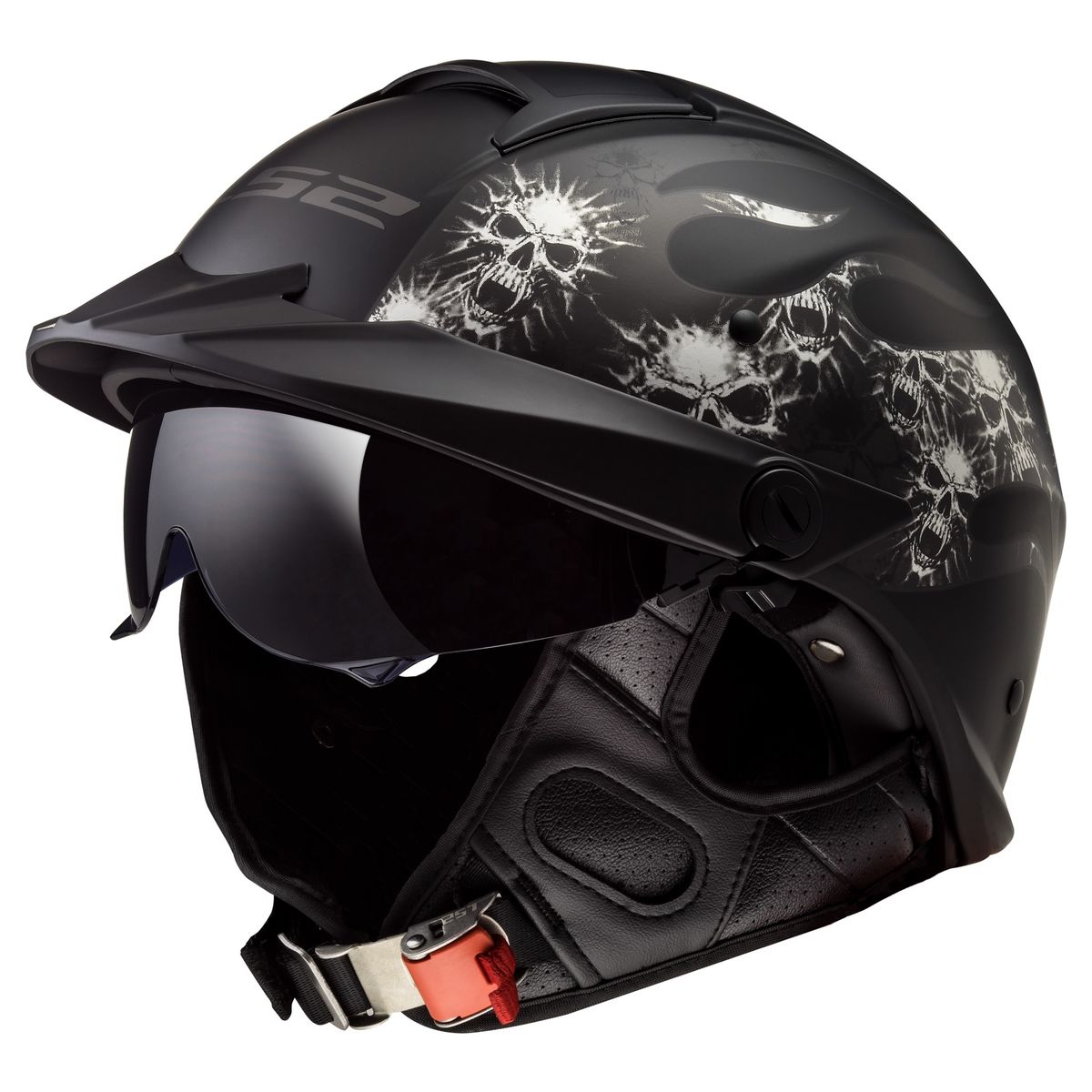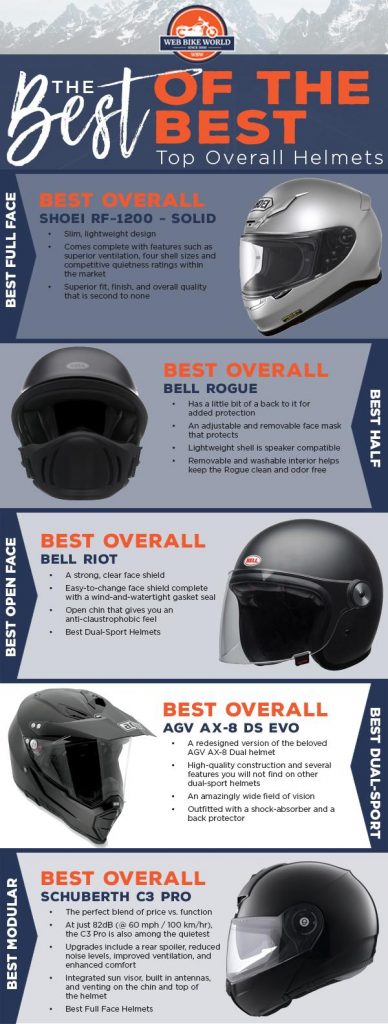Guide Contents
Shopping For a New (or Your First) Helmet? You’re In the Right Place.
Welcome to the Most Comprehensive Guide You’ll Read All-Year!
Helmets are a simple thing: they protect your head from the elements and, as will happen from time to time, asphalt too. They’re a seemingly simple thing, because like all things touched by the exponential march of progress, there’s much more to a good helmet than what meets the eye.
We have been reviewing helmets for over 20 years and are the most reliable source of unbiased advice. When we test a helmet, we beat it up for up to six weeks to understand how it performs in the real world. Then we tell you what we think—the good and the bad—so you can make better buying decisions.
To create our motorcycle helmet buyers guide, we sat down and asked ourselves: what makes a good helmet great, and what are the most important things to look for when shopping for a new helmet? Answering those questions and providing a list of—gasp—recommendations took plenty of research, referencing, and collaboration. We connected with major brands, motorcycle experts and, of course, our comprehensive library of motorcycle helmet reviews.
See Also:
Motorcycle Helmets 101
The first thing to buy when you’re planning on riding a motorcycle for the first time is your helmet. At least, that’s what you do if you’re smart.
A helmet will do more than protect your noggin (though a good helmet will certainly do a good job of that). It will also protect you from wind, rain, snow, road debris, and noise pollution, and prevent you from getting ear aches; heck, modern helmets can even stream music and GPS navigation.
At its most basic, a helmet is essentially three components: a hard outer layer (called the shell), a soft inner layer (usually made of expanded polystyrene or polypropylene), and some kind of mechanism to keep the whole thing strapped to your head.
Most modern helmets made today provide superior protection compared to helmets from 10+ years ago. Many advancements have occurred in recent years that have made helmets lighters, safer, and more feature rich. You get advanced materials such as carbon fiber, improved optics in the face shields, and new safety mechanisms (such as MIPS, which stands for multidirectional impact protection system) that take full advantage of computer-assisted design.
Learn more about motorcycle helmets here: Types, DOT/ECE/SNELL, Safety, Helmet Care & Maintenance
What to Look for When Shopping Helmets
We recommend that all riders, whether you are just starting out or have been riding for years, place safety at the top of their list when looking at new helmets.
Of course, there are a lot of other important elements to consider, too: fit, comfort, price, and the type of helmet are almost important.
We’re operating on the assumption that you’re relatively new to motorcycles and riding gear; more advanced riders looking for information on the best gear should check out our recommendations for each helmet type.
Don’t forget: we’ve got dozens of extensive hands-on helmet reviews too!
 Price
Price
While price shouldn’t be the primary factor that dictates your helmet purchase, it’s rare that we are afforded the luxury of shopping unrestricted by budget.
The price of a helmet is influenced by several things, such as the materials used, the technology integrated, various certifications, and its brand. There are some other intangibles as well; Arai helmets, for example, are all handmade and their slight premium over comparable helmets reflects that.
If you’re just getting into riding, spending $300 on a helmet is completely appropriate. $300 gets you a great helmet at a price that shouldn’t cause anxiety if you accidentally drop it.
Where the sticker can really climb is when you get into helmets designed for racing or other specialized applications. A racing helmet made of carbon fiber, while being much lighter than a traditional helmet, will also have a price tag to match the exotic materials used.
A good rule of thumb to follow is to spend enough to protect your head, but not so much that you need to pull back from other gear.
 Safety
Safety
The first and foremost purpose of your helmet is to protect your head in the event of an accident. If there is one area that you should not compromise on, it’s safety. You want a quality helmet that will provide you with the protection you need.
At a minimum, your helmet must pass local regulations. In North America, that’s the DOT (Department of Transportation). In the EU, it’s ECE (Economic Commission for Europe).
Helmets that have DOT/ECE approval are safe and road legal. However, if you want to ensure your helmet provides maximum protection, you will also want to look for SNELL certification.
SNELL is an independent non-profit organization that is more thorough and rigorous in its testing. Helmets that receive SNELL certification have proven themselves to be safe; however, SNELL certification often adds somewhat to the price of a helmet.
See also: the differences between DOT, ECE, and SNELL.
Shopping Now? We Recommend:
webBikeWorld has worked closely with RevZilla over the years to provide our testers with products to review. In addition to being a great site to shop from, they’re also a great partner. Both Amazon and Revzilla have a big selection of helmets from great helmet manufacturers.
RevZilla
Free shipping on orders over $40
30-day no-nonsense return policy
Excellent selection of all major brands
Awesome pricing
 Fit & Comfort
Fit & Comfort
How a helmet fits is critical. A helmet that fits well not only provides maximum protection for its wearer but also allows for a more enjoyable ride. You’ll be amazed and how long you can hit the back roads with a great-fitting helmet.
Several things influence fit:
- Size: If you’re unsure of how to determine your size, go here.
- Materials: Foam comes in many different densities, as do most materials used a helmet/helmet-liner.
- Your head: let’s face it; we don’t all have the same head shape. Some helmets work better with certain shapes.
- Customization: Many helmets come with pads/inserts/removable sections that can greatly alter how a helmet fits.
- Weight: Riders should place more emphasis on the weight of their helmet. The lighter the helmet, the less energy it transfers upon impact. Plus, a lightweight helmet is much more enjoyable and comfortable to wear for long periods.
See also: helmet size chart
 Type
Type
Helmets come in many shapes and sizes, categorized by their defining style or use. The most common types of helmets are:
- Full face: This type of helmet provides the most protection. As its name implies, it covers most (if not all) of your face.
- Open face: This type of helmet does not have a chin guard, leaving the face exposed.
- Modular: A combination between an open and full face helmet, a modular helmet allows you to remove or flip up the lower section
- Off-road / motocross: These helmets typically feature sun visors, extra chin protection, and additional venting. However, many also come without a visor.
- Half: Offering the least protection compared to other helmet types, a half helmet covers the top portion of the head and leaves the rest exposed.
- Dual-sport: Also called adventure helmets, dual-sport helmets can be worn on or off-road. Most feature integrated visors; like off-road, most do not have face shields.
A Properly Fitting Helmet Feels Better to Wear & Provides Superior Protection
One of the most common questions new riders ask when buying a new helmet is “what makes a helmet comfortable to wear?”. This is a good question because the answer is very personalized; there is no “one-size-fits-all” approach to helmets. There are two reasons for this: your head shape and the helmet liner.
In order for a helmet to provide maximum protection, it is essential that it fits you properly. This means a snug, secure fit that provides maximum coverage in the event of a crash.
The ideal helmet will be both secure and comfortable. In order to accomplish this, it’s important that you choose the appropriate helmet for your head shape.
Why Head Shape Matters
Your head shape, along with your jawline, plays a significant factor in helmet comfort. While everyone’s head is shaped a little differently, there are roughly three predominant shapes:
- Long Oval: Head shape is longer from forehead to back of skull vs. ear to ear.
- Intermediate Oval: The most common head shape. The front to back measurement is slightly longer than ear to ear.
- Round Oval: Both front to back/ear to ear measurements are nearly the same.
This doesn’t mean that there will be a helmet for each head shape; in fact, motorcycle helmet manufacturers seem to have been converging towards a “neutral” intermediate oval over the last few years.
Helmet Interior & Liner
This is a multifactorial element to consider: the material that makes up the motorcycle helmet’s liner should feel comfortable against the skin; the internal padding of the helmet should act as a comfortable cushion between the head and the helmet internals; the liner shape should perfectly match your head shape.
The perfect helmet would be so comfortable that the rider would forget it’s there.
Full Face Helmets
Ideal For
The best all-around helmet type you can buy. A full-face is always an appropriate helmet to wear.
Strengths
Enjoy maximum protection from wind, bugs, road debris, and other hazards. Nothing protects your head as effectively as a full-face helmet.
Common Features
- Excellent venting
- Integrated/retractable sun visors
- Bluetooth intercom system connectivity
See More
Best of Both Worlds!
Modular/Flip-Up Helmets
Ideal For
Riders that want the convenience that comes with an open face helmet, but also want the protection and comfort offered by a full-face.
Strengths
Want to talk on the phone, grab a bite, or have a drink? Tired of having to take your helmet off to have a conversation? With the convenient flip-up functionality of a modular helmet, you’ll never have to suffer such inconvenience again!
Common Features
- Flip-up chin bar, visor, or both
- Integrated face & sun-shields
- Bluetooth intercom system connectivity
See More
Shopping Now? We Recommend:
webBikeWorld has worked closely with RevZilla over the years to provide our testers with products to review. In addition to being a great site to shop from, they’re also a great partner. Both Amazon and RevZilla have a big selection of helmets from the world’s best helmet manufacturers.
RevZilla
Free shipping on orders over $40
30-day no-nonsense return policy
Excellent selection of all major brands
Awesome pricing
Great For Both On & Off-Road!
Dual-Sport Helmets
Ideal For
Riders that intend to spend equal amounts of time on and off-road. If you’re riding a dual-sport bike, a dual-sport helmet is likely a great match 😉
Strengths
These helmets generally offer maximum protection, great venting, integrated sun visors (often removable), and a reduced weight compared to other options. Plus, a dual-sport helmet looks pretty awesome, too!
Common Features
- Excellent venting
- Removable visors & face shields
- Ultra-lightweight design
See More
For an open-air feeling with excellent protection!
Open-Face Helmets
Ideal For
Riders who log most of their miles behind a large fairing.
Strengths
These helmets offer near full-face levels of safety, but maintain an open air feel. Many include a drop-down visor and the ability to easily add in a communication system. Thanks to their covered ears, they can still provide a quieter experience when behind a large fairing.
Common Features
- Drop down sun visors
- Covered ears for warmth and reduced wind noise
- Lightweight compared to equivalent full-face
- Easy to add Bluetooth Communication System
See More
Great For Cruisers and Touring!
Half Helmets
Ideal For
If you want the wind against your face while you ride, a half helmet is perfect for you! They are a great blend of protection and freedom, allowing you to really enjoy that open-road feeling.
Strengths
Strong protection around the sides, top, and back of your head. Many feature retractable or flip-up face shields and visors. Compared to a full-face or modular helmet, a half helmet is typically lighter and more comfortable for long-term wear.
Common Features
- Excellent venting
- Integrated flip=up/retractable visors & face shields
- Ultra-lightweight design
See More
Best Helmet by Type
Each year we connect with the leading manufacturers to learn about the latest products they have in development and the ones that are being newly released. Then, plans are made for our reviewers to test the products you most want to learn about.
There are a lot of great options on the market as we head into 2022. We’ve sorted through what’s out there, referenced our testing notes, and put together our recommendations for each category. See our helmet FAQ to learn more about our perspective and how we evaluate helmets.
Full Face
The ultimate kind of helmet, this type has it all! A full-face helmet protects all sides of your head, including your chin, and has a sturdy face shield to protect you from bugs and asphalt. This is what motorcycle racers use (and what I personally use as well). They offer the most protection.
Modular
Modular helmets offer the best of both worlds: superior safety and wind/debris protection compared to all other helmet types (aside from full face), along with the accessibility and convenience of open-faced designs. Modular helmets are an excellent choice if you want a helmet that nearly does it all.
Dual Sport
Compared to a full face or modular, a dual sport helmet is lightweight and more aggressively styled. Dual sport helmets, among other things, combine off-road style with full face conveniences (like a face shield). Check out our recommendations for dual sport helmets here:
Half
A half helmet offers its wearer excellent protection of the top, sides, and forehead. Many half helmets come with an integrated visor, omitting a chin bar but otherwise offering wind/road debris protection. For those that prefer the open road with minimal distractions, we recommend these half helmets:




